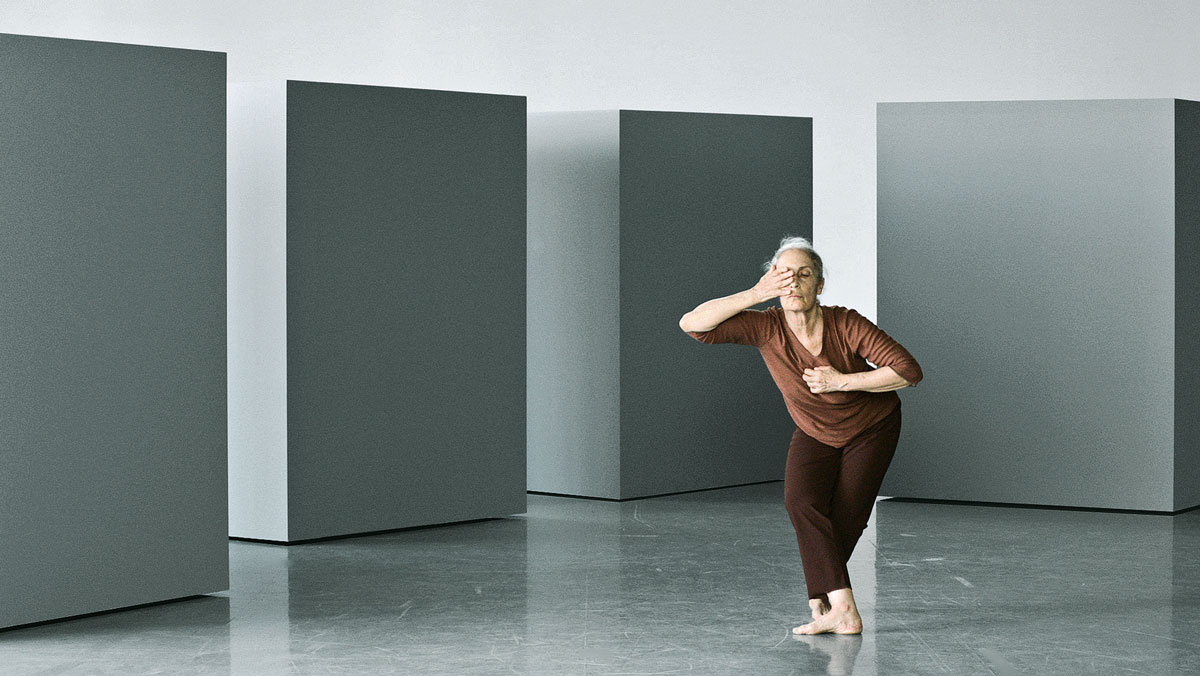Scenography for Sharon Lockhart’s Noa Eskhol
2011-2013This multimedia exhibition exploring the creative
activities of Israeli dancer, choreographer, and textile artist Noa Eshkol (1924–2007) consisted of a fivechannel
film installation and a series of photographs
capturing spherical models of the Eshkol-Wachman
Movement Notation system, along with a selection of
Eshkol’s carpets, scores, and drawings as well as other archival materials. The films show dancers performing
Eshkol’s choreography with backdrops consisting of her carpets affixed to free-standing wall sections. In sync with the composition of the stage design in
the films, Escher and GuneWardena’s design of the exhibition employed freestanding large-scale wall
sections for the screening of the films, although vertical rather than horizontal as in the films. These were positioned at seemingly random angles to one
another so as to mobilize the slowly moving onlookers in relation to the body movements of the dancers.
Interspersed were the archival materials on display in sculptural and strictly geometric vitrines. Whereas the
relationships between the different components in the Lunch Break exhibition in Maine underscored chance and unpredictability to encourage subjective experiential
encounters, the installation of Sharon Lockhart | Noa Eshkol emphasized form through a rigorous
and interrelated choreography even though the
configuration of the freestanding walls, vitrines, and
horizontal volumes varied slightly at each exhibition
venue. In effect, and perhaps most importantly, the
installation design not only displayed the exhibited work but created a relationship between the two artists: a virtual encounter between Lockhart, a strict
and exacting photographer and filmmaker, and the
minimalist and systematic choreographer Eshkol, both of whom are and were committed to frequently unseen visual practices. By wandering through this creative conversation between two artists at decidedly different
historical moments and geographic locations, the
viewer engaged with both, aided by resemblance and repetition of spatial components.


Whereas the
relationships between the different components in the Lunch Break exhibition in Maine underscored chance and unpredictability to encourage subjective experiential
encounters, the installation of Sharon Lockhart | Noa Eshkol emphasized form through a rigorous
and interrelated choreography even though the
configuration of the freestanding walls, vitrines, and horizontal volumes varied slightly at each exhibition
venue. In effect, and perhaps most importantly, the
installation design not only displayed the exhibited work but created a relationship between the two artists: a virtual encounter between Lockhart, a strict and exacting photographer and filmmaker, and the
minimalist and systematic choreographer Eshkol, both of whom are and were committed to frequently unseen visual practices. By wandering through this creative conversation between two artists at decidedly different
historical moments and geographic locations, the
viewer engaged with both, aided by resemblance and repetition of spatial components.